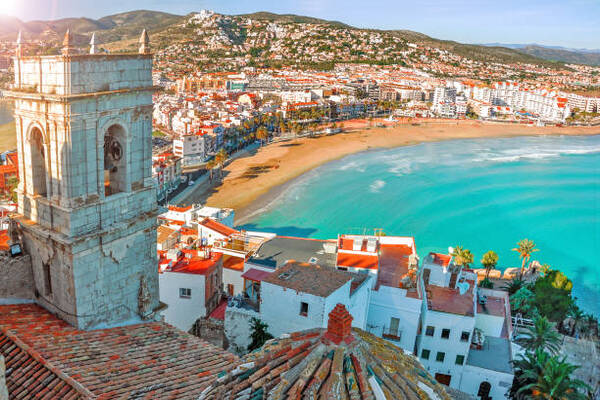Published on
October 22, 2025
Spain is on track to reach nearly 100 million international tourists by 2025, thanks to a steady increase in visitor numbers and higher spending. With 66.8 million arrivals already recorded by August 2025, a 3.9% increase compared to the previous year, the country’s tourism sector is thriving. This growth reflects Spain’s appeal as a prime destination, bolstered by efforts to attract high-spending, long-stay tourists and promote sustainable, quality tourism. Despite not hitting the symbolic 100 million mark this year, Spain’s strategic focus on diversifying destinations and spreading tourism throughout the year ensures continued success.
Spain is poised to close 2025 with approximately 97 million international tourists, based on data from the INE’s Frontur and Egatur surveys. As of August, the country had already welcomed 66.8 million visitors, marking a 3.9% increase compared to the same period in 2024. These visitors contributed to a remarkable €92.463 billion in spending, reflecting a 7.1% rise year-on-year. August alone saw 11.3 million tourists arriving, generating €16.39 billion in expenditure, a sign of continued strong demand despite a slight slowdown in growth.
While Spain may not meet the symbolic target of 100 million tourists this year, the trend remains positive for the sector. The Balearic Islands topped the list of most-visited destinations in August, with 2.53 million visitors. Catalonia followed closely behind with 2.18 million, while Andalusia saw 1.71 million arrivals. These numbers underscore the continued appeal of Spain’s varied destinations, particularly those in coastal and regional areas.
The UK has been a key source market for Spain, registering 13.2 million tourists between January and August, an increase of 4.33% over the previous year. In August, 2.21 million British tourists visited, marking a 4.39% rise compared to the same month in 2024. Germany also contributed significantly, with 8.2 million German tourists visiting Spain during the same period, reflecting a 2% increase. In August, 1.29 million Germans traveled to Spain, representing a growth of 4.45%.
The Spanish government, through the Ministry of Industry and Tourism, has highlighted the positive relationship between increased spending and the steady growth in tourist arrivals. This growth aligns with Spain’s strategy of promoting sustainable tourism, prioritizing quality over sheer quantity. The government has made it a priority to diversify tourist destinations across the country and spread demand more evenly throughout the year, reducing the pressure on traditionally popular spots.
By focusing on high-spending, long-stay tourists and promoting less crowded, but equally attractive destinations, Spain aims to balance the economic benefits of tourism with the need for sustainability. This strategy aims to ensure that the tourism sector continues to thrive while minimizing environmental impact and improving the quality of life for locals in popular tourist regions.
In addition, Spain’s approach has also led to a diversification of the tourist demographic. Efforts to appeal to niche markets, such as eco-tourism, cultural tourism, and sports tourism, have proven successful. These initiatives have contributed to the steady rise in visitor numbers and expenditure, with more tourists choosing to experience Spain in new and diverse ways. With a rich cultural heritage, vibrant cities, and a diverse landscape, Spain continues to attract visitors from all over the world.
Despite the slight moderation in growth rates, Spain’s tourism sector remains resilient. It is expected that the country will continue to see steady growth in the coming years as it enhances its tourism offerings and refines its approach to attracting high-quality visitors. By focusing on sustainable growth and long-term strategies, Spain is setting itself up for continued success in the competitive global tourism market.
The outlook for Spain’s tourism industry is optimistic, with continued investment in infrastructure, services, and promotion of lesser-known destinations helping to ensure that both tourists and locals benefit from the industry’s success. The shift towards quality tourism is anticipated to not only maintain Spain’s strong position in the global market but also contribute to a more sustainable and balanced tourism economy for years to come.
As the year progresses, the government’s efforts to decentralize demand and foster long-term tourism growth will be key to achieving lasting success, ensuring that Spain remains a top destination for international travellers.
